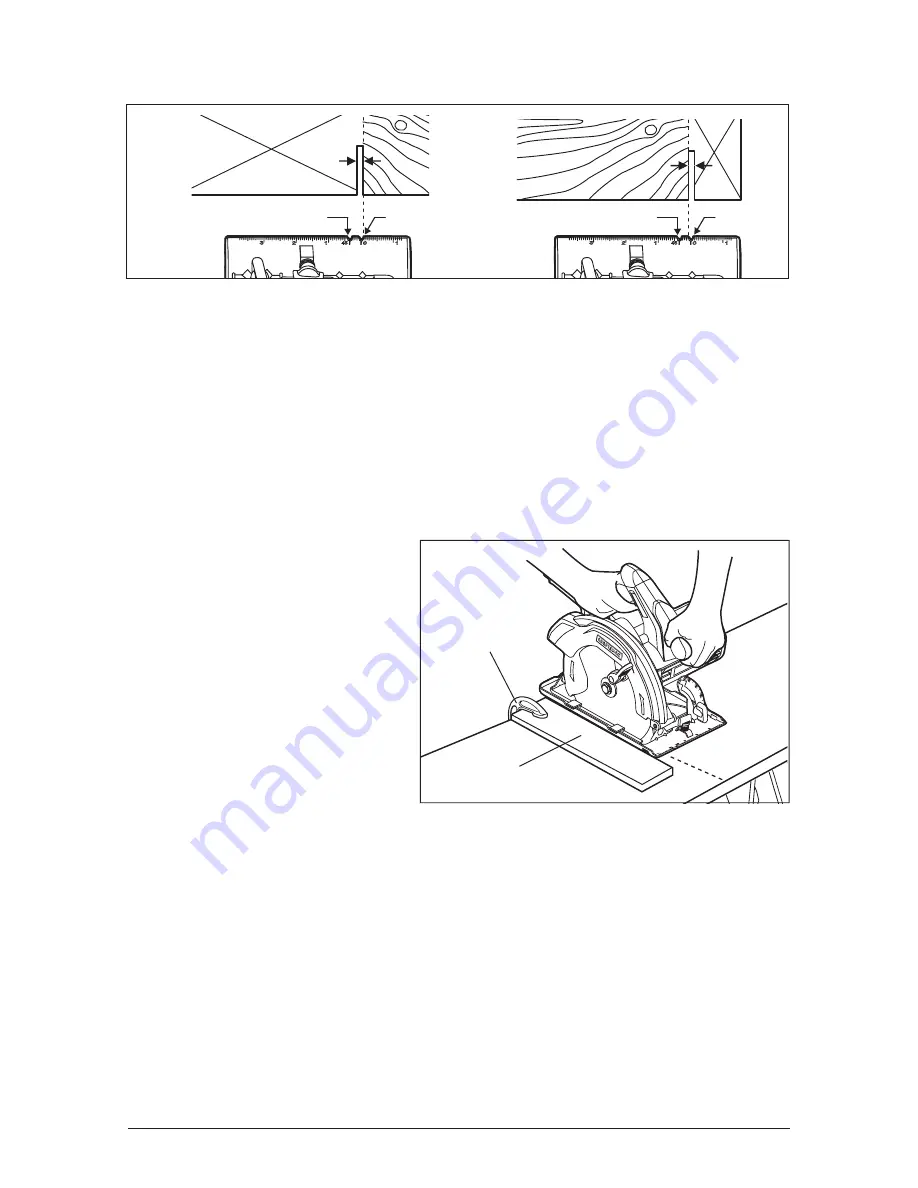
22
CUTTING MARKS (Fig. 13)
45
0
45
0
Fig. 13
The 0° cutting notch indicates the position of the saw blade when making right-
angle cuts. The 45° cutting notch indicates the position of the saw blade when
making 45° cuts.
1. Hold the saw firmly with both hands.
2. For precise cuts, position the circular saw against the workpiece as shown
in Figure 13.
3. Because the thicknesses of blades vary, make a trial cut in scrap material
along the guideline to determine how much, if any, you should offset the
blade from the guideline to allow for the kerf of the blade (width of the blade
teeth) in order to get an accurate cut.
MAKING RIP CUTS AND
CROSS CUTS (Fig. 14)
The combination blade provided
with your saw is suitable for both
cross cuts and rip cuts. Ripping is
cutting lengthwise along the grain
of the wood.
Always use a guide when making
long or wide rip cuts with your
saw. You can use either a straight
edge (available separately) or an
edge guide (available separately).
Cutting with a straight edge (available separately)
1. Clamp the workpiece securely so that the workpiece will not move during
the cut.
2. Use C-clamps to secure a straight edge to the workpiece.
3. Plug the saw to power source.
4. Hold the saw firmly with both hands.
5. Rest the front edge of the base on the workpiece, without the blade
touching the workpiece.
6. Depress the lock-off button and squeeze the trigger switch to start the saw.
7. Allow the blade to reach full speed, and then guide the saw into the workpiece.
8. Keep the base of the saw along the straight edge to achieve a straight rip cut.
Fig. 14
C-clamp
Straight Edge






























